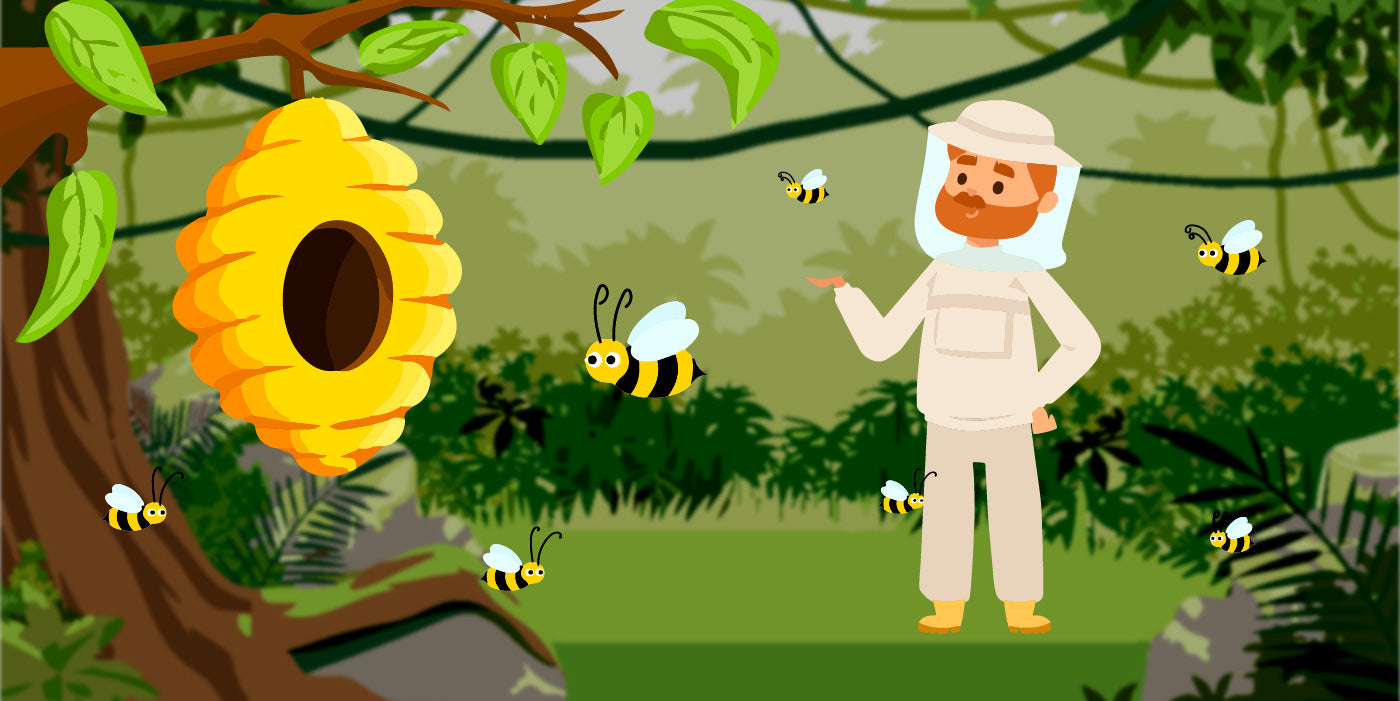
Beekeeping Safety and Protective Gear for Beekeepers
Beekeeping is a truly rewarding and fascinating hobby or profession. The hum of bees working diligently, the sweet scent of honey in the air, and the satisfaction of tending to a thriving hive are just a few of the joys that beekeepers experience.
However, beekeeping also comes with its share of challenges, one of the most critical being safety. Honeybees are generally docile creatures, but when provoked, they can become quite defensive. That's where protective gear for beekeepers becomes essential. In this blog post, we'll explore the importance of beekeeping safety and the protective gear that is every hive keeper's best friend.
Why Beekeeping Safety Matters
Before we delve into the details of protective gear, it's crucial to understand why beekeeping safety should be a top priority. Bees, while vital for pollination and honey production, can become agitated and aggressive when their hive is disturbed. Stings are not just painful; they can cause severe allergic reactions in some individuals. Therefore, ensuring your safety while working with bees is of paramount importance.
The Beekeeping Safety Gear Arsenal
So, what constitutes the beekeeping safety gear arsenal? Let's break it down.
The bee suit is your primary defense against bee stings. Think of it as your beekeeper superhero costume. This full-body suit is typically made of lightweight, breathable material to keep you cool during hot days in the apiary. Look for suits with elastic cuffs and ankle bands to prevent bees from sneaking in. When it comes to color, white is the go-to choice as it is less likely to agitate your bees.
Your face is the most vulnerable part of your body when working with bees. A good-quality beekeeping veil that attaches securely to your suit is essential. It not only protects your face from stings but also provides clear visibility. Opt for a veil with fine mesh to ensure maximum protection without compromising your ability to see what you're doing.
Beekeeping gloves are your hand's best friends when handling frames, bees, or hive components. They come in various materials, including leather and nitrile. The key is to find gloves that fit well, providing you with dexterity while keeping you sting-free. Well-fitted gloves also prevent bees from getting trapped inside, reducing the chances of accidental stings.
Sturdy, ankle-high boots are a must to protect your feet while beekeeping. Tucking your pants into your boots ensures no bees sneak up your legs. Boots with thick soles offer an extra layer of protection from potential stings if a bee were to land on your foot.
The smoker is a beekeeper's trusty ally when it comes to calming bees during hive inspections. By gently puffing smoke into the hive, you mask the alarm pheromones that bees release when agitated. This calming effect allows you to work more peacefully and reduces the likelihood of defensive behavior.
While not directly protective gear for your body, a hive tool is an essential part of your safety kit. It's used for prying apart frames and hive components, reducing the risk of accidentally crushing bees or disturbing them more than necessary during inspections.
Accidents can happen, even with the best safety precautions in place. That's why having a well-stocked first aid kit in your beekeeping arsenal is crucial. It should include items like antiseptic wipes, adhesive bandages, sting relief pads, and any personal medications you may require.
Lastly, always have emergency contacts readily available. While bee stings are typically not life-threatening, severe allergic reactions can occur. Having the contact information of someone who can assist you in an emergency is a safety measure that should not be overlooked.
General Question About Protective Gear
What should I do if I get stung while beekeeping?
If you get stung, quickly scrape out the stinger with a fingernail or a credit card to minimize venom injection. Wash the area with soap and water, apply ice to reduce swelling, and take an antihistamine if necessary. Always have a first aid kit on hand for emergencies.
Can I use regular gloves instead of beekeeping gloves?
While you can use regular gloves, beekeeping gloves are designed specifically for handling bees. They offer better protection and dexterity, reducing the risk of getting stung or accidentally injuring bees.
How do I clean my beekeeping suit?
Most beekeeping suits can be machine washed. Use a gentle cycle with mild detergent, and avoid using fabric softeners or bleach. Always check the manufacturer’s instructions for specific care guidelines.
How often should I use a smoker during hive inspections?
Use the smoker at the beginning of the inspection to calm the bees. If the bees become agitated during the inspection, apply more smoke as needed. Be cautious not to overuse it, as excessive smoke can stress the bees.
What should I include in my beekeeping first aid kit?
A beekeeping first aid kit should include antiseptic wipes, adhesive bandages, sting relief pads, antihistamines, and any personal medications. It’s also wise to include a small knife or tweezers for removing stingers and a cell phone to call for help in case of severe allergic reactions.
Beekeeping is a truly enchanting endeavor, but it's not without its challenges. Safety should always be your top priority as a beekeeper. By investing in high-quality protective gear and following safety best practices, you can enjoy the wonders of beekeeping while minimizing the risks.
Remember, bees are incredible creatures that contribute immensely to our environment and our lives. Let's ensure that our interactions with them are safe and harmonious.
So, suit up, stay safe, and let your beekeeping adventures begin!



Leave a comment